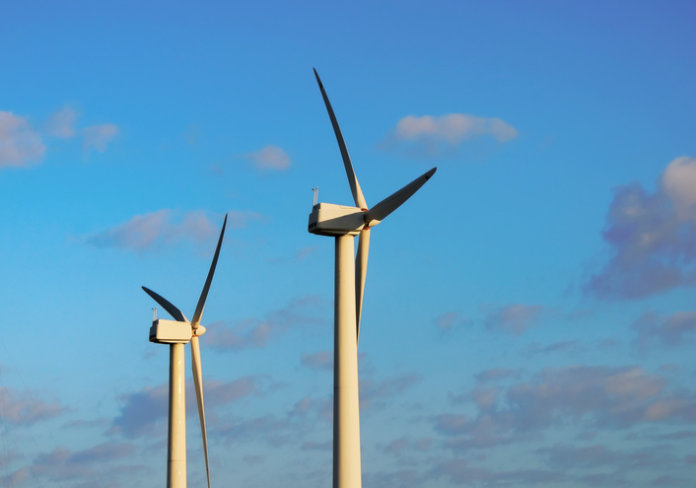Last week, the Illinois Commerce Commission (ICC) held a policy session to examine the impact of wind energy on Illinois’ electric grid, economy and environment, as well as the obstacles to developing utility-scale wind farms.
“Wind energy is one of the fastest-growing sources of renewable energy in the United State and, in 2017, provided more than six percent of Illinois’ electric generation,” said Anastasia Palivos, acting ICC commissioner, who led the Oct. 10 session.
“The state still has more wind power potential, and about 600 MW of additional capacity is either under construction or in advanced development. Development of wind assets can reduce CO2 and strengthen our economy through job creation and savings on energy-related costs,” she said.
The first panel – “Connecting to the Grid: What are the benefits and challenges associated with the interconnection and integration of wind energy on the grid?” – was moderated by Emily Brumit, ICC legal and policy advisor.
The panelists included Nicole Luckey, director of regulatory affairs at Invenergy; Chad Craven, manager of transmission at Tradewind Energy; Neil Shah, senior manager of
resource interconnection at the Midcontinent Independent System Operator (MISO); and Eric Seidler, vice president of asset management, engineering and maintenance at Ameren.
Panelists discussed the benefits of interconnection and integration of wind energy onto the grid, such as stabilizing energy costs, reducing CO2 emissions and making the grid more resilient. Panelists pointed out that Illinois still faces many challenges in wind energy integration. For example, wind farms must stay close to existing infrastructure in order to be economically feasible, which may be limiting in many circumstances. Panelists also discussed whether the build-out of more transmission is necessary to increase wind production.
“With more than 7,000 MW of wind installed [nationwide] last year alone, now is the time to discuss the important steps Illinois, MISO and PJM can take to ensure additional wind energy can be integrated onto the system reliably and cost-effectively,” suggested Luckey. “With small, incremental changes, we can pave the way for wind to play an even larger role in our energy mix.”
Katharine McErlean, ICC assistant to the executive director, moderated the second panel, “The Economics of Wind,” which explored how wind has driven down energy costs and reduced emissions in Illinois and how wind projects contribute to the Illinois economy through tax payments, jobs and other benefits.
Panelists included John Hensley, senior director of research at the American Wind Energy Association; Michael Goggin, vice president of Grid Strategies LLC; and Jeff Reinkemeyer, director of eastern renewable development at Avangrid Renewables.
Panelists explained how the economic benefits of wind energy include reduced energy costs, economic development dollars in rural areas, lower property taxes, and high-paying jobs in rural areas.
Ritta Merza, legal and policy advisor for the ICC, moderated the final panel, “Legal and Policy Considerations to Increase Wind Energy,” which focused on the current legal and policy considerations that will shape the future of wind energy. Panelists included Elizabeth McErlean, attorney at Steptoe & Johnson LLP; Christie Hicks, manager at the Environmental Defense Fund; MeLena Hessel, policy advocate at the Environmental Law & Policy Center; and Sean Brady, senior counsel and regional policy manager for the East at the Clean Grid Alliance.
Panelists discussed laws, such as the Future Energy Jobs Act (FEJA), and how they have shaped the development of wind energy in Illinois and across the country.
McEarlean noted that wind, as of 2016, contributed less than 6% of electricity in Illinois, but the enactment of the FEJA calls for a renewable portfolio standard of 25% by 2025, of which 75% must come from wind and solar.
“To meet this ambitious goal,” McEarlean said, “the Long-Term Renewable Resources Procurement Plan, developed by the Illinois Power Agency, outlines certain procurement events for renewable energy credits (RECs), including a procurement in summer 2018 for 2 million RECs delivered annually from new utility-scale wind projects.”
Hicks added, “Embracing Illinois’ huge potential for wind power will lead to economic growth, investment and cleaner air. Policies like time-of-use electricity rates, markets that appropriately value wind energy, and thoughtful transmission planning can help bring those benefits to bear.”




